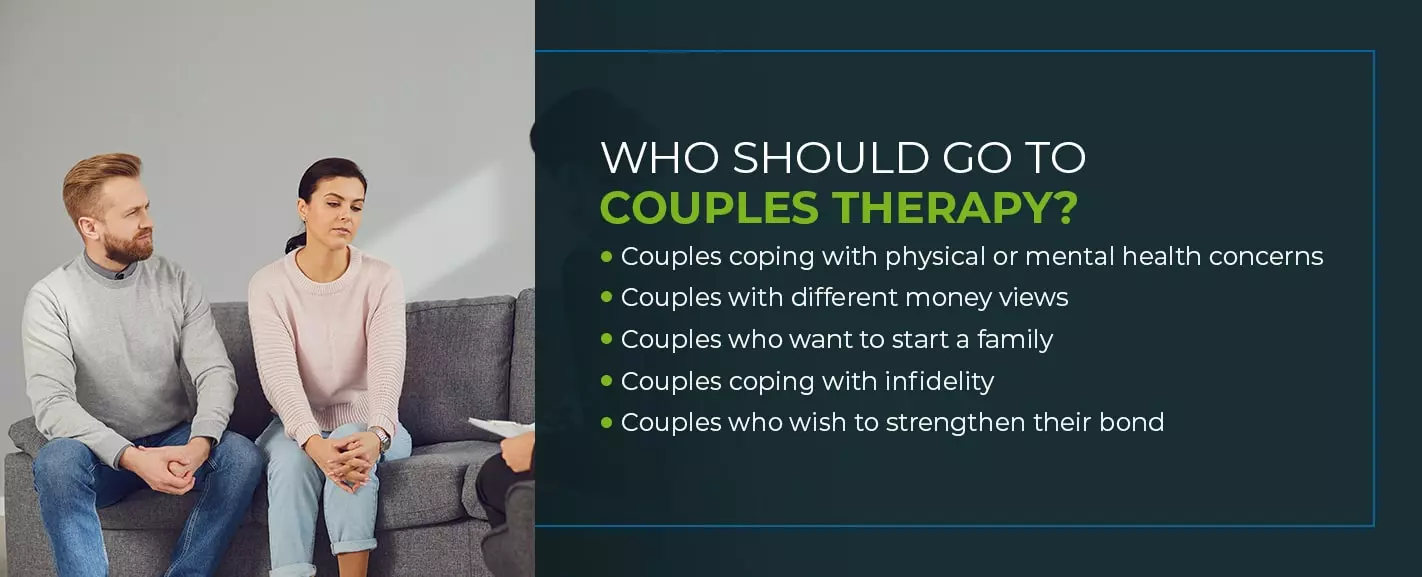Little Known Facts About Aim Point Counseling.
Little Known Facts About Aim Point Counseling.
Blog Article
Aim Point Counseling Can Be Fun For Anyone
Table of ContentsThe smart Trick of Aim Point Counseling That Nobody is DiscussingThe 15-Second Trick For Aim Point CounselingThe smart Trick of Aim Point Counseling That Nobody is DiscussingIndicators on Aim Point Counseling You Should KnowWhat Does Aim Point Counseling Do?The Greatest Guide To Aim Point Counseling
The longitudinal design includes a pre-treatment survey and 2 follow-up studies at 3- and 12-months post-intervention. The research study is embeded in 8 Relationships Australia Victoria centres, across city, external suburbs, and regional/rural sites. Relationships Australia, a non-government organisation, is the biggest copyright of pair therapy and relationship solutions in Australia.
These high prices of partnership failure have been constantly linked with adverse health repercussions for both grownups and youngsters adhering to divorce/separation.
The Ultimate Guide To Aim Point Counseling
The impacts of divorce and separation can be destructive, research study shows that high connection disharmony in undamaged pairs is also likely to have adverse results.
Variables that affect the results of these services need complete investigation. Research study to day has determined both pair and specific factors that may add to partnership discord. These include connection satisfaction and commitment at the couple level, and clinical depression at the individual degree. However, robust research to assess relationship-enhancing interventions in the neighborhood are limited.
Unknown Facts About Aim Point Counseling
Connection satisfaction has been the most common outcome variable determined in greater than 200 evaluations of couple counselling [11,12] Studies have actually located considerable improvements in relationship satisfaction from pre- to post-treatment [13,14] and throughout one to 2 years following counselling [15] In these researches, partnership fulfillment was most frequently assessed making use of the Dyadic Adjustment Range (DAS) [16] While a lot of researches show improvements in connection contentment adhering to pair counselling, they are limited by the samples and procedures made use of, mainly temporary follow-up time structures, and analyses that do not account for the dyadic nature of couple data., is one more frequently checked out partnership end result.
To sum up, study shows that couple-specific variables along with specific variables might forecast the outcomes of pair therapy and connection services. The causal instructions of these connections, however, is much less clear. These monitorings are vital, because, to validate and guide the application of relationship services such as pair coaching, empirical evidence has to discover both the results of connection services and the factors that forecast effective therapy.
For that reason, there is a growing agreement that effectiveness research studies should be enhanced by effectiveness study to best educate professional technique [ 29] The limited effectiveness research study that exists to date recommends that couple coaching can enhance outcomes such as partnership contentment [33,43], interaction skills and general well-being [44], at the very least in some European countries.

We currently know little concerning the profiles of couples who look for out relationship education and learning compared to those who look for relationship therapy, or the end results of these programs. However, anecdotal proof recommends that there might be considerable distress amongst at the very least some couples seeking partnership education. Relationship education programs differ from pair counselling as they are usually highly structured, performed in groups, and concentrate on a blend of four components; understanding, responses, cognitive adjustment, and abilities training [45]
The 6-Second Trick For Aim Point Counseling
Feedback entails individuals completing questionnaires regarding their relationship (e.g. actions of social issues), and receiving details on what their ratings indicate. Cognitive-behavioural approaches advertise altering cognitions to facilitate favorable relationships. These might include promoting practical attributions/expectations around unfavorable companion behavior [46] In skills training, couples go to talks or presentations on partnership skills, and practice these during facilitator-led tasks [ 45]
These results have continued for up to find out here 4 years in some researches [47] These meta-analyses highlight constraints in the current literature on connection education and learning. Specifically, the bulk of researches included pairs from top socio-economic backgrounds who were not experiencing high connection dissonance [47,48] This example account may not represent customers that usually offer for relationship education.
What Does Aim Point Counseling Do?

Extremely little research study has taken a look at the comparative benefits of pair counselling and connection education and learning programs. As clients are most likely to self-select right into these service kinds, it is not clear whether characteristic relationship distress profiles present to every solution kind, or undoubtedly whether there is a communication in between providing profile, solution kind and result.
(https://penzu.com/public/fccff3359b2a67da)
Hence, we have included a 12-month follow-up to evaluate longer-term patterns and effects. The research makes use of a variety of standard result steps since some previous investigations have actually been criticised for their lack of standard assessment [50] Ultimately, using analytical evaluations that presume independence of data, such as t-tests, or ANOVAs, has prevailed in previous researches [ 44,49]
For that reason, we recommend to utilise multi-level analytical modelling treatments that control for the inter-dependence of couple information to analyze any kind of treatment impacts. The certain aims of the ECC study are to: 1. Map profiles of customers looking for area agency-based couple coaching vs. partnership enhancement programs in regards to socio-demographic and connection indicators (such as connection complete satisfaction, relationship commitment, interpersonal troubles, and factors for attending), as well as wellness (such as depression, general health and wellbeing) and wellness service usage (eg.
2. Figure out whether couple therapy and partnership education services boost three- and twelve-month results for connection complete satisfaction, dedication, and anxiety, using analytical analyses proper to pair data. 3. Determine the family member payments of client variables (specific and pair) and therapy/education aspects to end results at 3- and 12-months, and to sustainability of outcomes over time.
The 10-Minute Rule for Aim Point Counseling
Multi-level modelling to establish pre-post differences, managing for dyadic (pair) degree. To contribute to the literary works evaluating the effectiveness of community-based pair counselling. The outcomes will aid scientific decision-making in community-based partnership solution settings, and specialist training. 3. To figure out the family member payments of client/couple and therapy variables to results at 3- and 12-months, and to sustainability of outcomes gradually.
Report this page